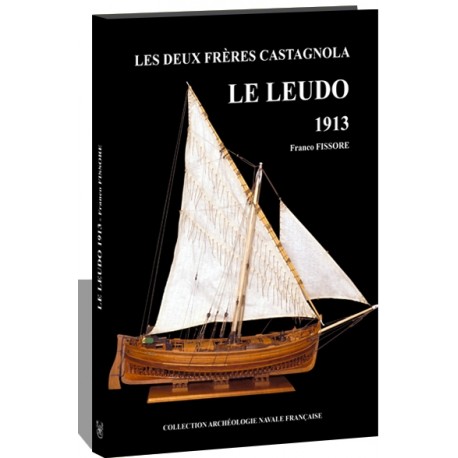The Leudo 1913
The leudo was a ship-of-all-trades, used as a commercial trading vessel for the transportation of various products.
100-page booklet with more than 250 photographs nand drawings, in color when available.
 En stock
En stock




The leudo represents an evolution of the «liuto», or «lembo», two-masted vessels from the middle-ages, rigged with forward-raked masts topped with Mediterranean mast-caps.
The development of the jib brought about the disappearence of the trinquet (foremast) and a increased rake of the mainmast.
The geographical origin of the leudo id Catalogna and it was even for a time called a “catalzno” by sailors from Liguria.
The leudo was a ship-of-all-trades, used as a commercial trading vessel for the transportation of various products.
As a fishing boat, often alternating according to the season or to the local economy.
It had however, three main areas of activity that resulted in a particular Italian designation for each form of leudo whose shape varied depending upon its use.
The two Castagnola brothers' leudo built at Lavagna in 1913 was a wine-carrier. It carried wine in barrels and other containers that were stowed either in the hold or on deck, It was a “barancelle de transport” drawing 14.14 tons, 15 m long and with a maximum breadth of 4.68 m outside planking at deck level, and 1.55 m of depth-in-hold.
Iconographic records consist among other things, of documents and manuscripts. Historical and graphical documentation ha been used to draw every detail of the timber structure.
A hard-board box with flaps contains a 100-page booklet with more than 250 photographs nand drawings, in color when available.
A 20-page chapter explaining in detail, the construction of the rigging. The monograph includes the 11 plates necessary for the construction of the timber structure.
LIST OF PLATES
PL. 1 - Lateral schematic view, as well as plan view and elevation of the bow and stern including the waterlines.
PL. 2 - Plan and lateral view on the longitudinal and transversal framing.
PL. 3 - full pattern of the frames once assembled.
PL. 4 - View of the completed framing
PL. 5 - View of the completed framing from the side and in plan view.
PL. 6 - Cut views.
PL. 7 - Complete view of the framing: profile and plan view.
PL. 7 - Fitting-out the deck.
PL. 8 - Detailed view of all the fittings.
PL. 9 - Sails.
PL. 10 - Mast, Yard and blocks, completed hull.
PL. 11 - Lateral view of the vessel under sail, belaying points.
Information: The plans at 1/18 or 1/36 are a supplement and can only be sold if you already have the complete monograph.
Author : Franco Fissore Traduction par by Gilles Korent
| Length | With | Height | |
| Hull | 60 | 22 | 16 |
| Model rigged | 90 | 22 | 87 |
No customer comments for the moment.








